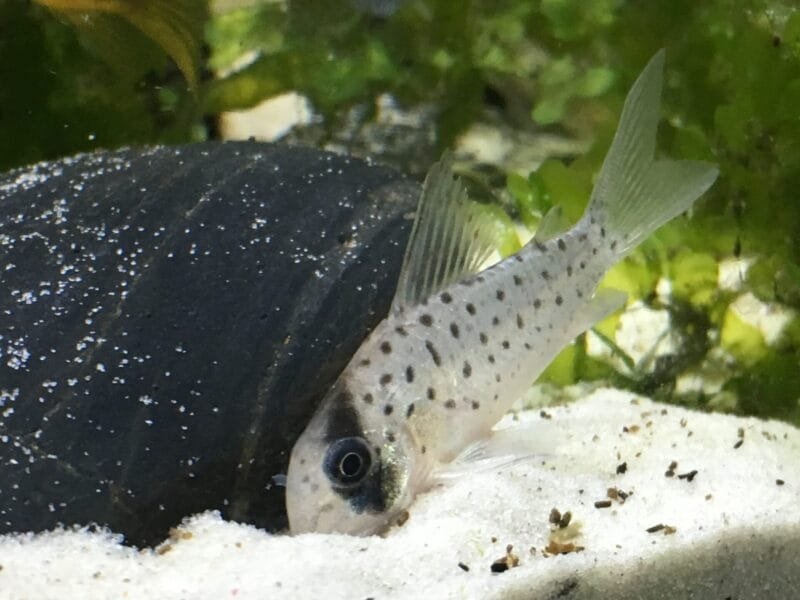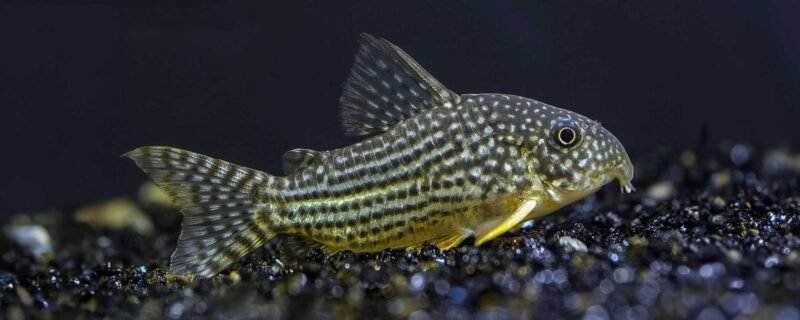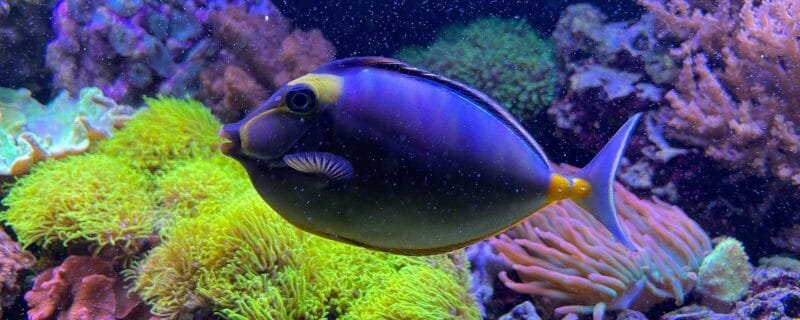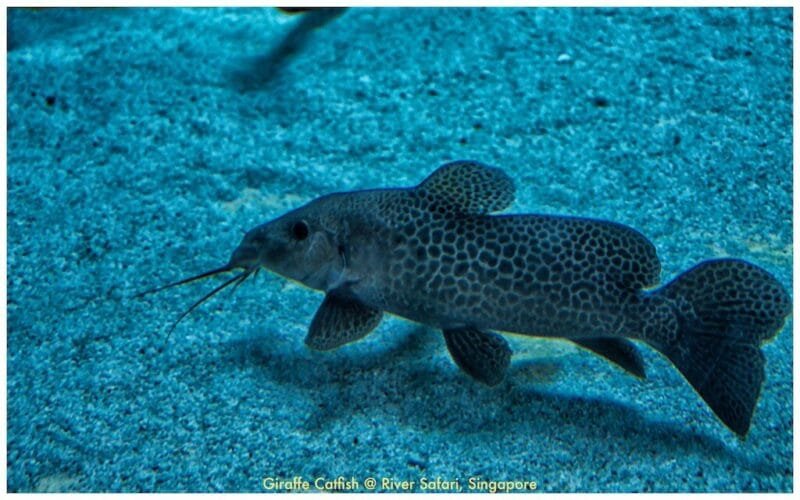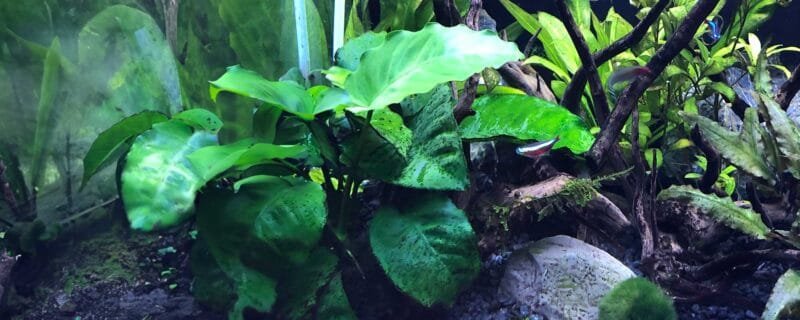The Ocellated Synodontis Catfish (Synodontis ocellifer), also known simply as the Ocellated Synodontis, is a remarkable member of the Mochokidae family, widely admired for its peaceful nature and unique spotted patterning. Native to the rivers and lakes of West and Central Africa, this freshwater species is prized by aquarists for its striking appearance, hardiness, and nocturnal behavior. While often overshadowed by its smaller cousins like the Dwarf Petricola Catfish, the Ocellated Synodontis stands out as an ideal mid- to large-sized catfish for community and semi-aggressive aquariums.
Common Name and Scientific Classification
Common Name: Ocellated Synodontis Catfish
Scientific Name: Synodontis ocellifer
Family: Mochokidae
Origin: West and Central Africa — particularly the Niger, Chad, and Nile river basins
Natural Habitat and Behavior
In the wild, Synodontis ocellifer inhabits slow-moving rivers and floodplains with soft, sandy or muddy substrates. These areas are typically shaded by overhanging vegetation and filled with submerged roots and leaf litter, providing ample hiding spots. This nocturnal species spends its daylight hours concealed within crevices or under driftwood, becoming active at dusk to scavenge for food along the substrate.
Like many Synodontis species, the Ocellated Synodontis is an opportunistic feeder and plays a valuable ecological role in keeping its environment clean by consuming leftover food, algae, and detritus.
Appearance and Size
True to its name, the Ocellated Synodontis features distinctive “ocelli” — eye-like spots scattered across its body and fins. Its base color ranges from pale beige to silver-gray, often overlaid with darker blotches or a marbled pattern. Its ventral surface is lighter, and the body is covered with small, bony scutes providing protection from predators.
This species can reach an adult size of up to 25–30 cm (10–12 inches) in captivity, making it one of the larger Synodontis catfish suitable for aquaria.
Diet and Feeding
The Ocellated Synodontis is omnivorous, feeding on a mix of plant and animal matter. In captivity, they thrive on a varied diet that includes sinking catfish pellets, algae wafers, frozen or live foods (such as bloodworms, brine shrimp, or blackworms), and vegetable matter like blanched spinach or cucumber slices.
For balanced nutrition, it’s best to follow general aquarium feeding practices such as outlined in our guide on Complete Nutrition for Aquarium Fish. Feeding them once or twice daily in the evening matches their nocturnal habits and encourages natural foraging behavior.
Water Conditions and Tank Setup
Temperature: 24–28°C (75–82°F)
pH: 6.0–7.8
Hardness: 4–20 dGH
As a riverine species, Synodontis ocellifer appreciates well-oxygenated water and moderate current. A tank of at least 55 gallons (208 liters) is recommended for adults, with fine sand or smooth gravel substrate to protect their delicate barbels. Provide ample hiding spaces using driftwood, caves, and rockwork to mimic their natural environment and reduce stress.
Regular water changes and proper filtration are essential, as these catfish produce a fair amount of waste. Consult our article on Choosing the Right Filter for Your Aquarium for maintaining healthy water parameters.
Tankmates and Compatibility
Ocellated Synodontis are peaceful yet assertive bottom dwellers. They coexist well with other medium to large non-aggressive fish. Suitable tankmates include African cichlids with mild temperaments (like Taiwanese Cichlids), large barbs, rainbowfish, and gouramis. Avoid overly aggressive species or fin-nippers, as these can cause stress and injury.
They are also compatible with other catfish, provided sufficient territory and hiding places are available. Keeping one specimen or a small group (in a large tank) usually works best.
Sexing and Breeding
Sexing Synodontis ocellifer can be difficult. Mature females are typically larger and rounder when viewed from above, especially when ready to spawn. Males may appear slimmer and slightly more active during breeding attempts.
Breeding this species in captivity is rare and challenging. It is believed that they spawn during the rainy season in nature, triggered by rising water levels and changes in temperature. Most aquarium specimens are wild-caught or commercially bred using hormone-induced spawning techniques.
Ease of Care
Ocellated Synodontis are considered moderately easy to care for, making them suitable for intermediate aquarists. Their robust nature allows them to adapt to a wide range of water conditions, though stability is key. Routine tank maintenance, quality water parameters, and a balanced diet will ensure longevity — often exceeding 15 years in captivity.
Species Variations and Albino Form
While the typical coloration of Synodontis ocellifer is grayish with dark ocelli, occasional albino or leucistic variations occur in the aquarium trade. The Albino Ocellated Synodontis displays a pale pink or cream body with red eyes and faint, ghostly spotting — an uncommon yet visually striking morph.
Though less common, the albino variant shares identical care needs and behavior, adding a unique aesthetic appeal to large freshwater aquariums.
Related Species
Synodontis ocellifer shares its genus with several popular aquarium catfish species, including the Dwarf Petricola Catfish and Cuckoo Catfish. While these species differ in size and patterning, they share similar care requirements, nocturnal habits, and peaceful temperaments.
Conclusion
The Ocellated Synodontis Catfish is a hardy and visually captivating freshwater fish that brings personality and balance to the aquarium’s bottom layer. Its adaptability, scavenging habits, and unique spotted beauty make it a favorite among Synodontis enthusiasts. With proper care, a clean environment, and compatible tankmates, this African catfish can thrive for many years as a centerpiece in any freshwater community tank.
FAQs About Synodontis ocellifer
1. How big does the Ocellated Synodontis Catfish get?
In captivity, the Ocellated Synodontis typically grows to about 10–12 inches (25–30 cm), depending on diet, genetics, and tank conditions.
2. Are Ocellated Synodontis aggressive?
No, they are generally peaceful but may display mild territorial behavior toward other bottom dwellers if hiding spots are limited. They coexist well in most community aquariums with similarly sized fish.
3. How long do Ocellated Synodontis live?
With good care, these catfish can live 10–15 years or more, especially in well-maintained aquariums with stable water conditions and high-quality nutrition.

